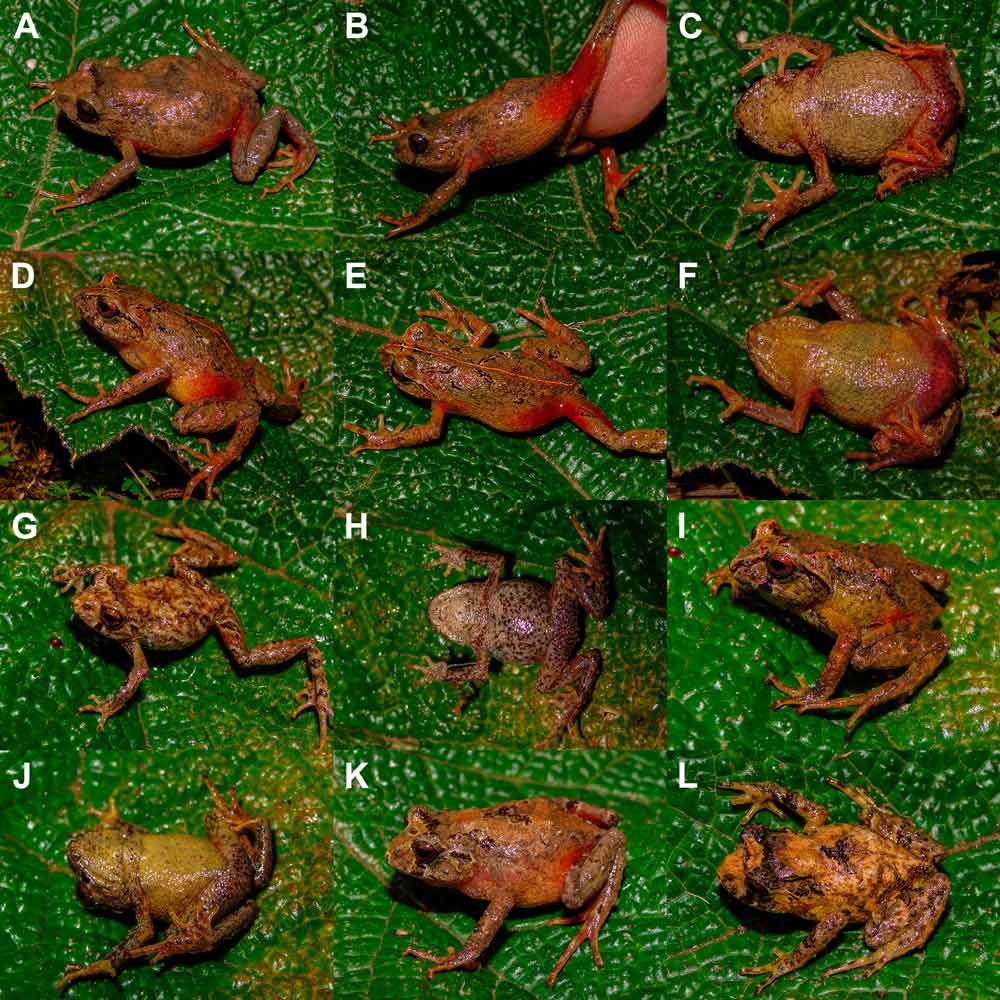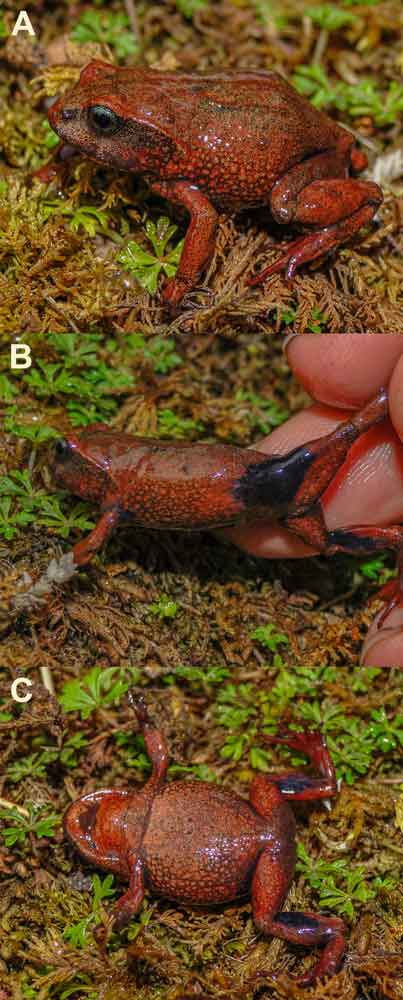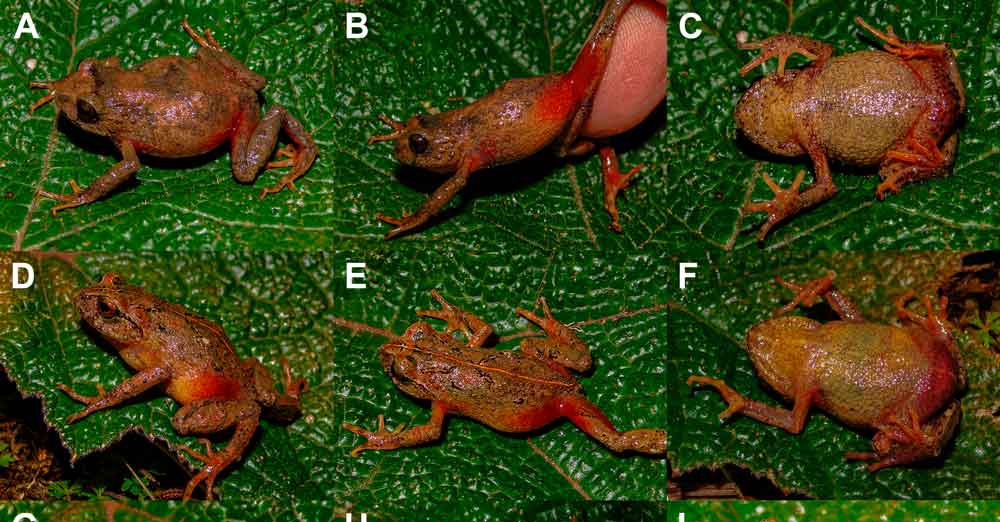Both frog species are only known by the type locality and are narrowly distributed in the Yanachaga-Chemillén National Park.
Researchers have described two frogs from the genus Phrynopus that are known to occur in the Cordillera de Yanachaga, Yanachaga-Chemillén National Park in central Peru. The frogs join 13 frogs in the Phrynopus genus, including P. apumantarum, P. badius, P. barthlenae, P. bracki, P. bufoides, P. horstpauli, P. inti, P. kauneorum, P. miroslawae, P. pesantesi, P. sancristobali, P. tautzorum, and Phrynopus sp. The researchers say they are distinct lineages within the subclass and not close sisters.
The first species, Phrynopus manuelriosi sp. nov. is a medium sized frog with small tubercles on its upper eyelids, heels and along the outer edge of its tarsus (main part of the hindlimb and the metatarsus in terrestrial vertebrates. It is red in coloration in the groin and thigh area as well as the concealed surfaces of the shank area.

Figure 4: Paratypes of Phrynopus manuelriosi sp. nov. in life. (A) Dorsolateral (B) lateral (showing the groin and anterior surface of thigh), and (C) ventral views of CORBIDI 7380 (SVL 25.6 mm); (D) dorsolateral, (E) dorsal (showing a fine pale middorsal band, red groin, and the red anterior and posterior surface of thigh), and (F) ventral views of CORBIDI 7383 (SVL 27.1 mm); (G) dorsolateral and (H) ventral views of male paratype CORBIDI 7390 (SVL 13.2 mm); (I) dorsolateral and (J) ventral views of male paratype CORBIDI 7386 (SVL 17.4 mm); (K) dorsolateral view of female CORBIDI 7387 (SVL 19.4 mm); (L) dorsolateral view of male CORBIDI 7381 (SVL 16.1 mm).
The second species, Phrynopus melanoinguinis. sp. nov. doesn’t have tubercles in the heels and tarsal area and is black in coloration in the groin area and in the hidden surfaces behind the hind limbs.

Figure 6: Holotype of Phrynopus melanoinguinis. sp. nov. (CORBIDI 7379) in life. (A) Dorsolateral, (B) lateral (showing the characteristic black coloration on the groin), and (C) ventral views (SVL 23.6 mm).
Both species are only known by the type locality and are narrowly distributed in the Yanachaga-Chemillén National Park.
The complete paper describing the two species can be read on the PeerJ Journal.



